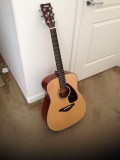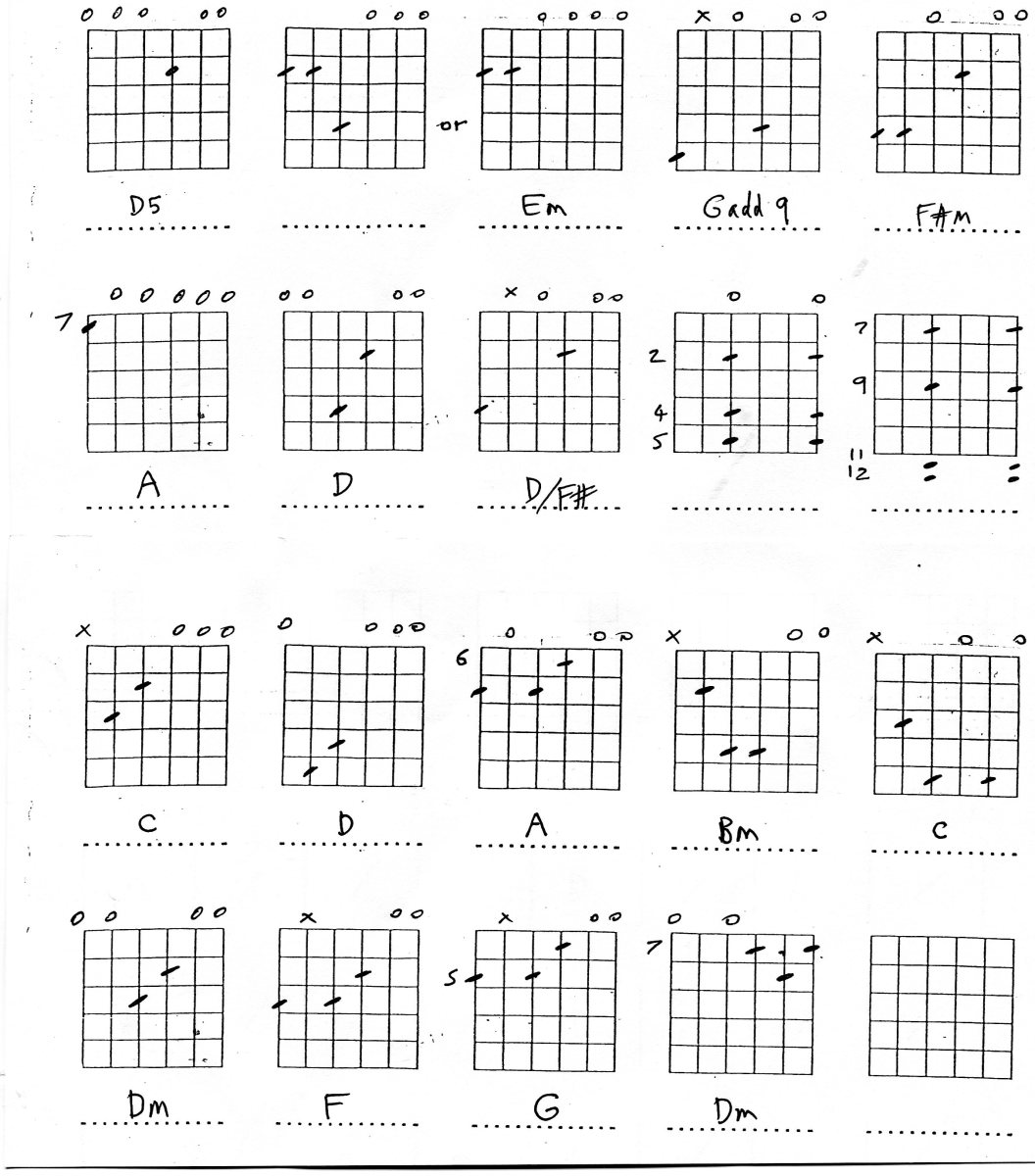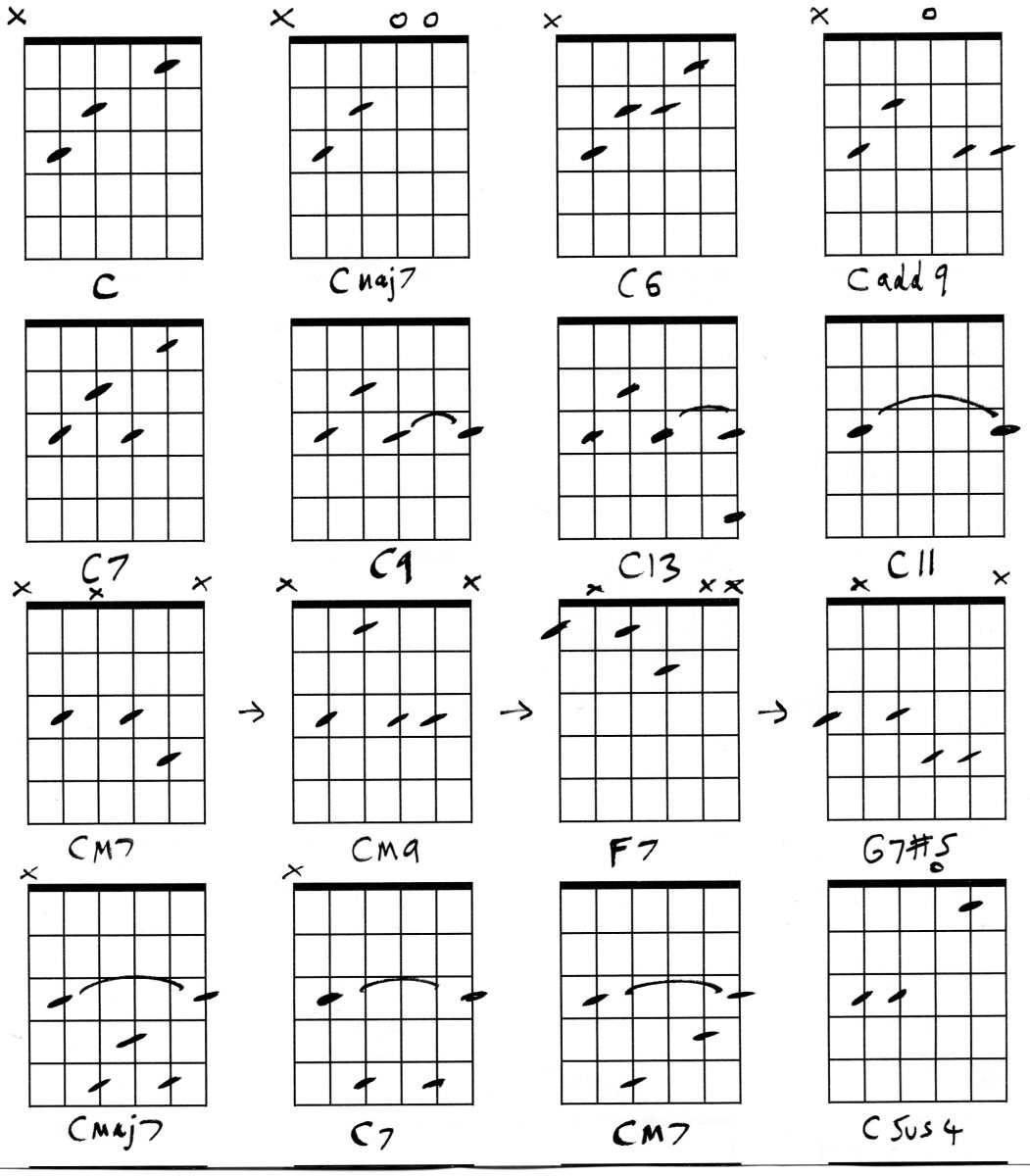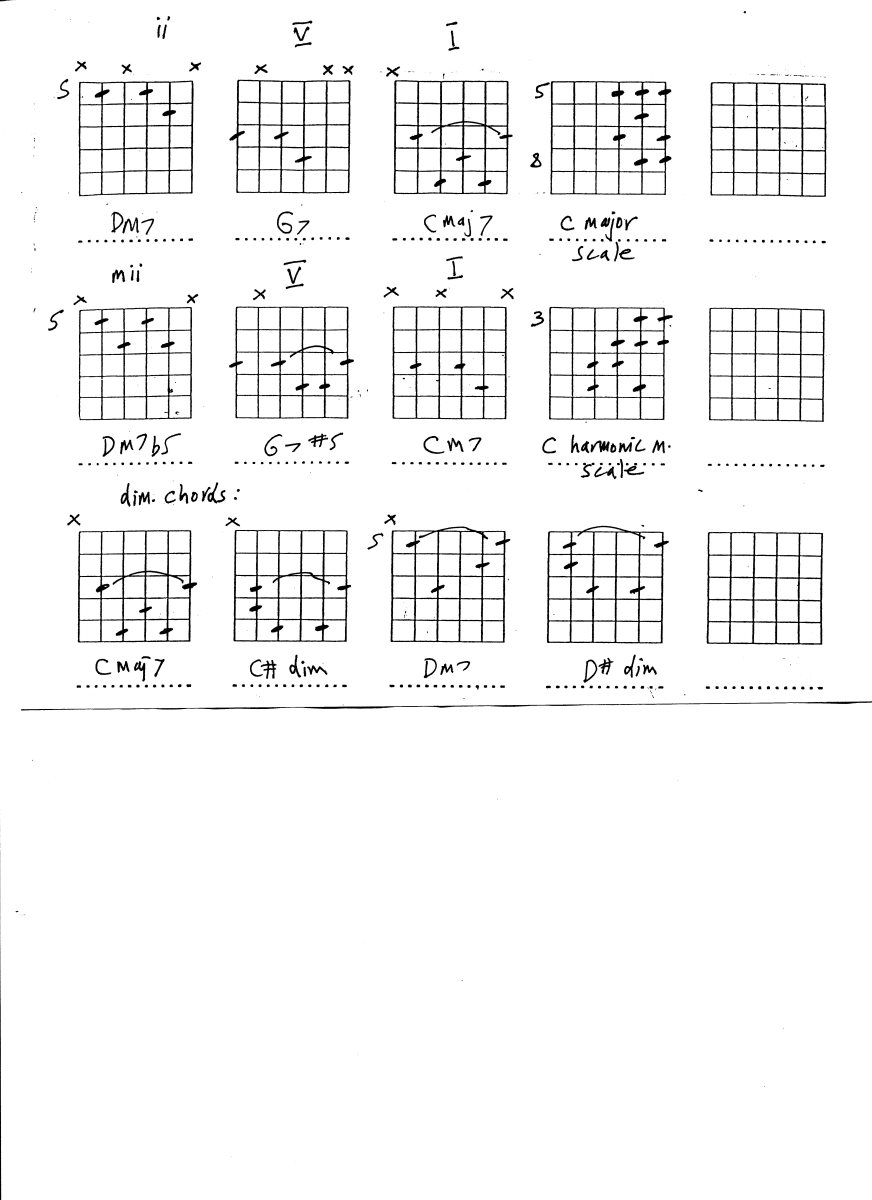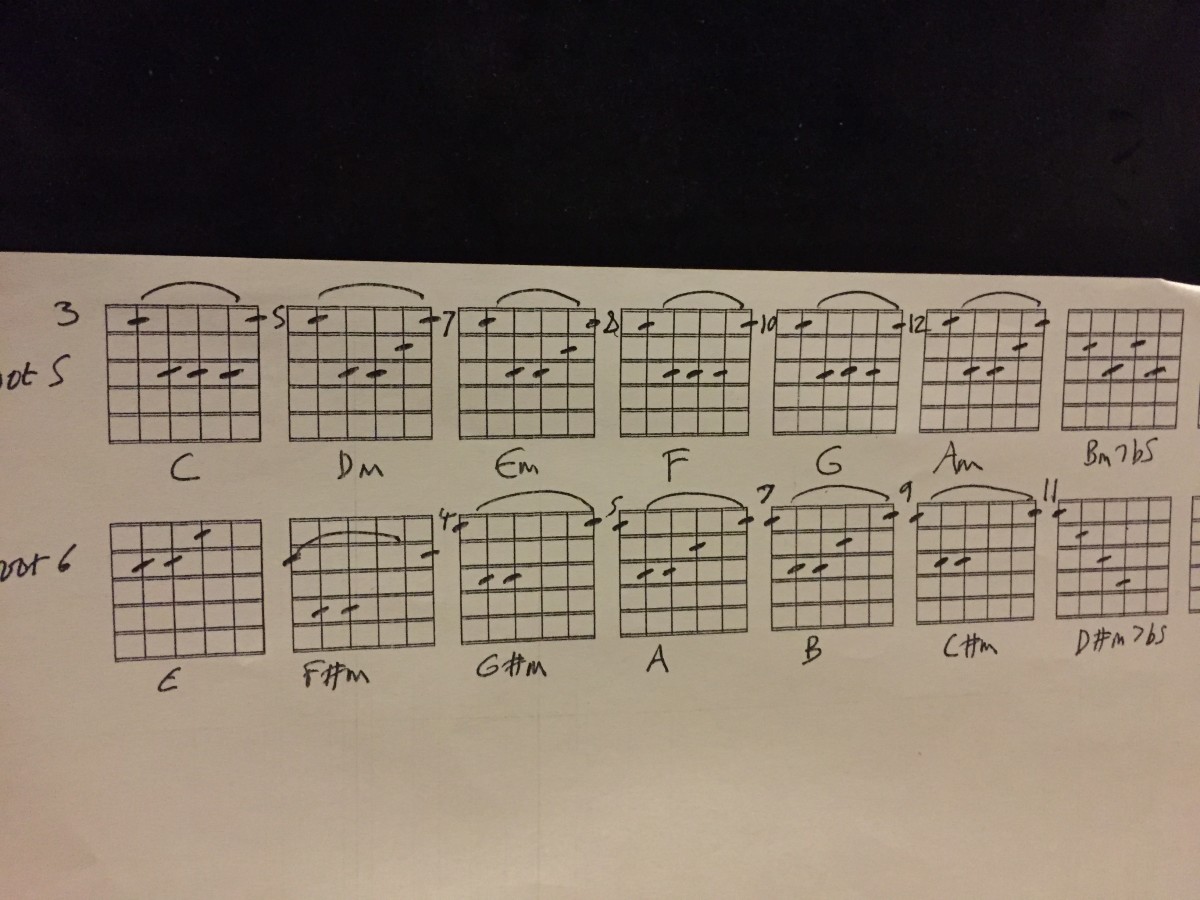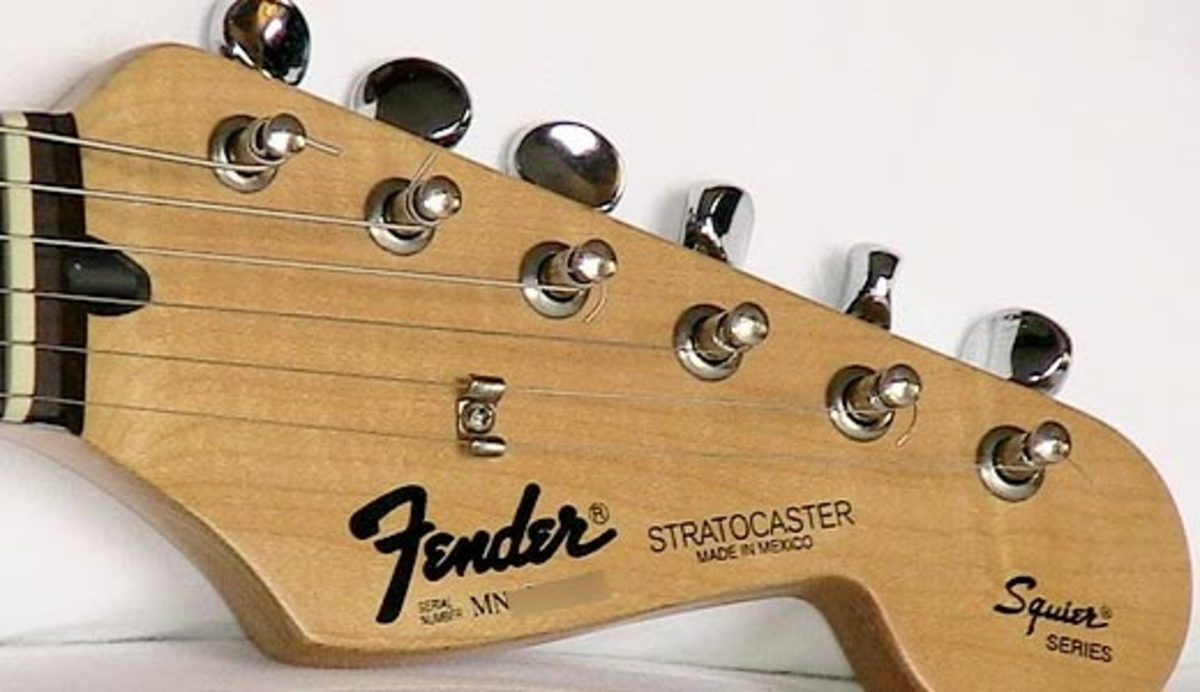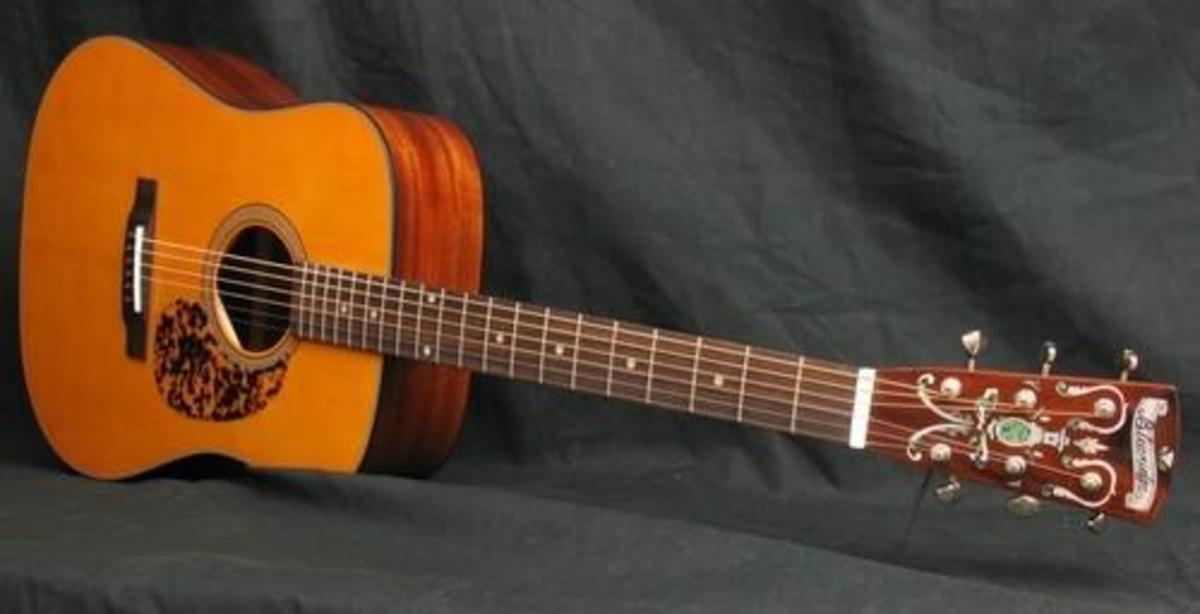Guitar Jazz Chords
Using jazz chords
Learning jazz chords in isolation isn't the best way to learn jazz guitar styles. You need to understand how they are used in jazz standards, in the context of a chord progression. The good thing is, you have a practical guitar skill that you can put into practice right away.
My new hub Guitar Lesson - jazz chords shows how to play a 12-Bar Blues in a jazz style. At a more basic level, there is a hub on 12- Bar Blues in A.
A very common progression in most jazz songs is the use of dim or dimished chords to link chords together, often in a chromatic movement (one step or one fret at a time)
This gives you a logical and predictable movement between chords which is very pleasing, and this idea was widely used in songs from the 1920s and 1930s. Many Broadway songs from this era, the Golden Age of American songwriting, are constructed in this way.
Many of the great jazz standards, such as Georgia on My Mind use these chord progressions.
Reading the chord grids below: Vertical lines are the strings, horizontal lines are the frets. The loop symbol is a barre. Fret numbers on the left.
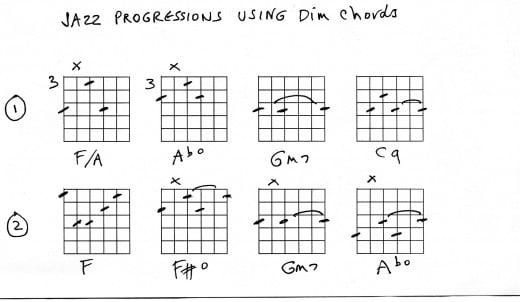
Practical tips
The cross above a string means, don't play this string. If you get the fingering right for these chords, you tend to mute this string anyway without any special effort. Just collapse the finger on string 6 a little, and string 5 will be muted.
Progression 1 is a descending pattern of chords, while progression 2 is ascending. The F chord in No.2 uses thumb round the neck for the bass note on string 6 (F)
Play each chord twice, but very slowly at first. These chords are normally found in a two-to-the bar context, so it makes sense to practice them that way. If you try to play them too quickly initially there is a chance of learning mistakes which then have to be unlearnt - a general tip for learning all kinds of things which can save a lot of time.
Diminshed chords either have a dim, or the small o symbol.
The loop symbol means barre or partial barre, flatten your first finger across multiple strings for this.(except C9, which uses your third finger)
Intro
You can also use both these progressions as an intro for any jazz tune. Impress your friends with your harmonic sophistication! Try transposing to other keys too, especially the jazz-friendly keys such as Bb, Eb and C.
For instance, the key of G will use exactly the same chords, but moved up 2 frets.
The key of A will be up another 2 frets, etc.
Standards
Standard jazz tunes that use these chord progressions include
- Ain't Misbehavin'
- Tiptoe thru the tulips
- Makin' Whoopee
- Bewitched
- Georgia On My Mind
Using dim chords in a Blues
One of the best ways to use diminished chords as connectors is in a 12-Bar Blues. The first four chords are used in bar 1 to connect E7 and A7 with a smooth rising bassline. I find it easier to use my thumb for the second chord, but you can change the fingering any way you like. Strings 6, 4 and 3 are where the voices are important, so using fingerpicking is good, but not essential.
- Bars 7 and 8 use the same voicing. Starting with the E7, move down one fret at a time - only the first two are shown.
- This 12-Bar is part blues, and part jazz - a great combination
- All we have really changed from a standard 12- Bar is this chromatic movement, plus the use of diminished chords as connectors
- If you are playing lead over these chords, try to include some diminished scale runs at the right places
12 - Bar Blues in E, with dim chords
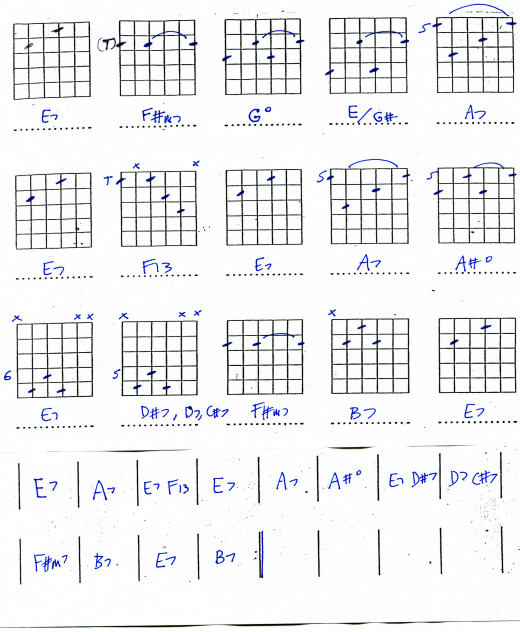
Recommended listening
The more jazz- influenced 12 bar Blues is something that is great to practice, and I do this literally every day. Check out Robben Ford and Tim Lerch for great exponents of this style.
Learning these chords, along with the Barry Harris method (one of the all time greats of jazz and tuition) will pay dividends in playing jazz standards, but also in general guitar playing and songwriting.

